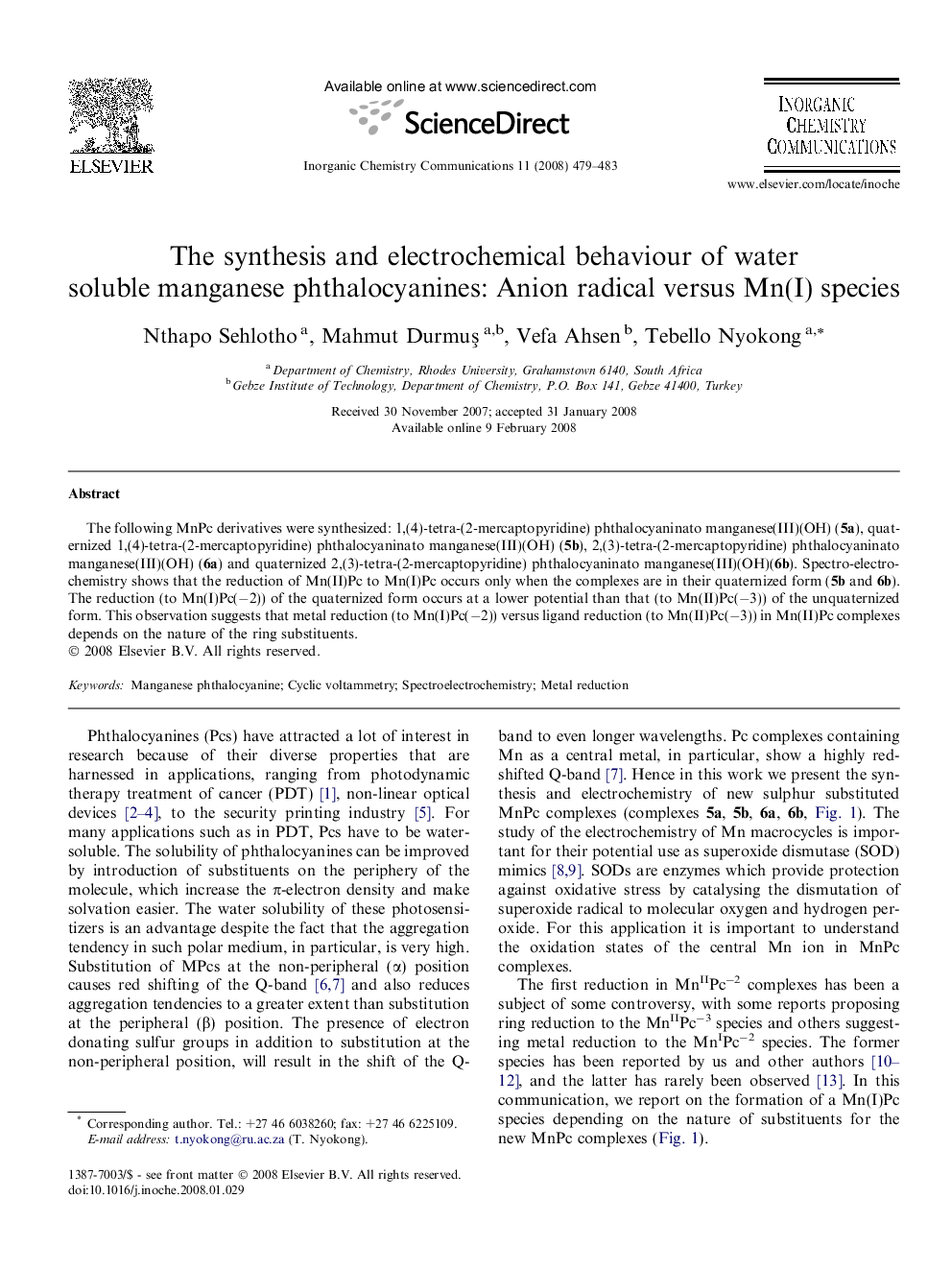| Article ID | Journal | Published Year | Pages | File Type |
|---|---|---|---|---|
| 1306643 | Inorganic Chemistry Communications | 2008 | 5 Pages |
The following MnPc derivatives were synthesized: 1,(4)-tetra-(2-mercaptopyridine) phthalocyaninato manganese(III)(OH) (5a), quaternized 1,(4)-tetra-(2-mercaptopyridine) phthalocyaninato manganese(III)(OH) (5b), 2,(3)-tetra-(2-mercaptopyridine) phthalocyaninato manganese(III)(OH) (6a) and quaternized 2,(3)-tetra-(2-mercaptopyridine) phthalocyaninato manganese(III)(OH)(6b). Spectro-electrochemistry shows that the reduction of Mn(II)Pc to Mn(I)Pc occurs only when the complexes are in their quaternized form (5b and 6b). The reduction (to Mn(I)Pc(−2)) of the quaternized form occurs at a lower potential than that (to Mn(II)Pc(−3)) of the unquaternized form. This observation suggests that metal reduction (to Mn(I)Pc(−2)) versus ligand reduction (to Mn(II)Pc(−3)) in Mn(II)Pc complexes depends on the nature of the ring substituents.
Graphical abstractThe reduction of Mn(II)Pc to Mn(I)Pc occurs only when the complexes are in their quaternized form, suggesting that metal vs. ligand reduction in Mn(II)Pc complexes depends on the nature of the ring substituents.Figure optionsDownload full-size imageDownload as PowerPoint slide
